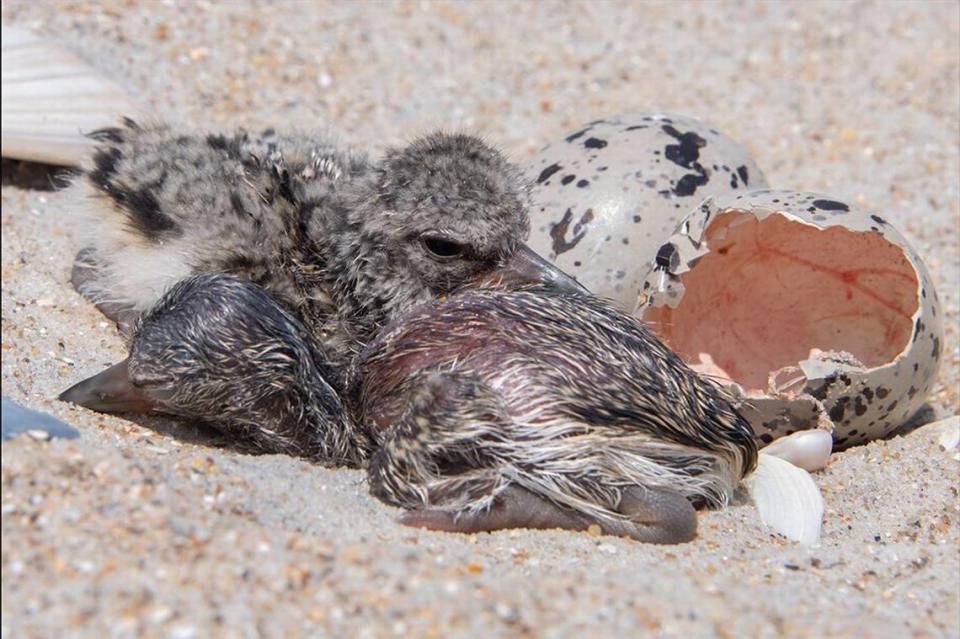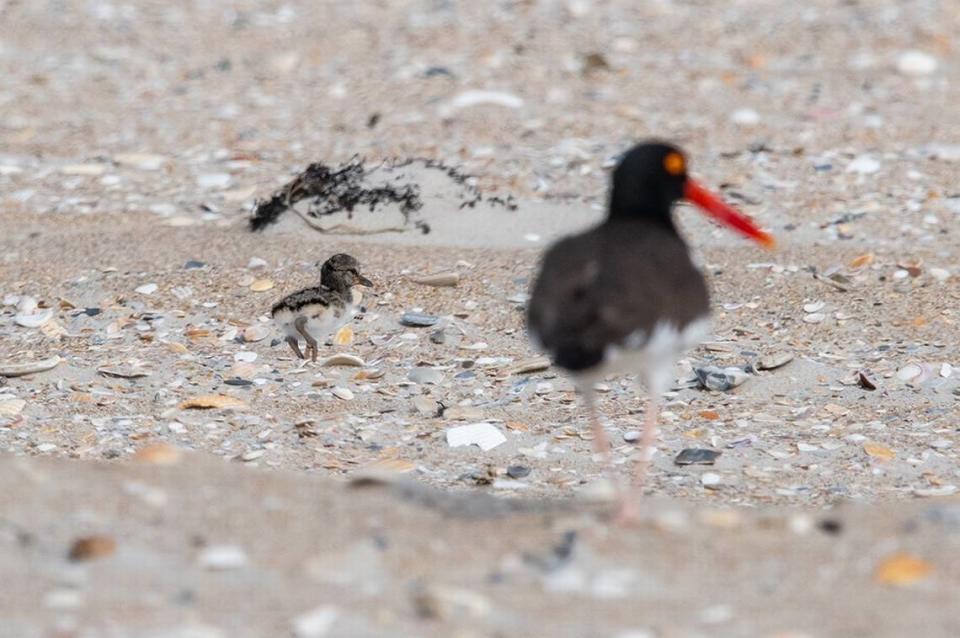Season’s first American oystercatcher hatchlings emerge on Outer Banks, photos show
North Carolina’s Outer Banks recently welcomed the first American oystercatcher hatchlings of the season.
The National Park Service shared photos of the new chicks, which hatched on Cape Lookout National Seashore this week, in a Facebook post on Wednesday.
One photo shows the hatchlings in their nest on the beach.
“The wet looking chick in the foreground has just hatched from the nearby open egg, while its drier, fluffier sibling hatched earlier in the day,” the park service says.

Another photo shows one of the chicks learning how to find food by following its parent around the beach.

American oystercatcher chicks are precocial, meaning they hatch ready to learn.
“Almost as soon as their down dries they are off and running, following their parents around on the beach and learning how to find food,” the park service says.
They can also camouflage themselves from predators by freezing, or crouching “unmoving on the sand.”
“This works great in evading gulls and hawks, but doesn’t work so well in avoiding motor vehicles,” the park service wrote on Facebook.
So visitors are asked to “give the chicks a chance” by avoiding driving on areas of the beach that are marked for nesting or feeding birds.
“The wildlife protection zones on the beach are there to protect not only the camouflaged nests but also the young chicks,” the park service says.
Last month, someone drove through one of the protected sites and knocked down warning signs. The park service told McClatchy News that at least three nests were disturbed.
Oystercatchers are considered a “high priority shorebird species” of “high conservation concern” in North America.
“The main threats to the Oystercatcher include its low population totaling a mere 11,000 birds on the East Coast, widespread loss of beach habitat, recreational disturbance, beach stabilization and predators that thrive in the presence of people,” the National Audubon Society says.
The birds can found year-round along the North Carolina coast and — with their “striking black and white plumage, a large bright red-orange bill and a loud unmistakable voice” — are considered the most recognizable of the state’s shorebirds, according to Audubon.
Oystercatchers are “ground-nesting shorebirds,” meaning they lay their eggs directly in the sand, according to the park service.
Their “long, knife-like bills” make them experts at catching and eating shellfish, NPS says. They either employ a “hammering technique” or “jab their bill into the open shell of an unsuspecting mollusk and sever the strong muscle that would otherwise clamp the two halves shut,” the park service says.
“It is one of the few birds that solely specializes on oysters, clams, mussels and other shellfish living in saltwater,” NPS says.

